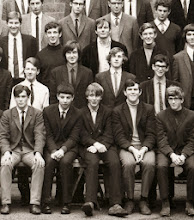
Kitson is a famous name in Leeds, and in many spheres. The family founded the famous Hunslet Engineering Works whose trains are still to be seen all over the world, some of them puffing up the Andes to Lake Titicaca. There's another one on the Snowdon Mountain Railway and we've got this nice picture of a retired loco slumbering away at Kirkstall, where enthusiasts run a narrow gauge line through the woods from Kirkstall Abbey.
 By the way, if you are in those parts, the Abbey House museum is great - as is the abbey itself, of course, plus its excellent new interpretation centre, and the cafe/restaurant at Abbey House is just tremendous. Delicious food and really nice staff. See www.leeds.gov.uk/page.aspx?pageidentifier=982E07BA1BEE64708 0256E1B0043190A.
By the way, if you are in those parts, the Abbey House museum is great - as is the abbey itself, of course, plus its excellent new interpretation centre, and the cafe/restaurant at Abbey House is just tremendous. Delicious food and really nice staff. See www.leeds.gov.uk/page.aspx?pageidentifier=982E07BA1BEE64708 0256E1B0043190A.Anyway, the Kitsons also entered politics as Liberals and produced two sons who were great patrons of the arts. Sydney was an architect who designed a number of villas in Leeds and the original building of the College of Art whose alumni include Henry Moore and Barbara Hepworth (check out the new Hepworth gallery opening in Wakefield next year - www.hepworthwakefield.com. He became the biggest collector of Cotman watercolours in the world and left the bulk of them to Leeds city art gallery although the Victoria and Albert, which was bequeathed a smaller number, fought a desperate but I am glad to say unsuccessful battle to get hold of Leeds' allocation.
 The story is well-condensed in Cotmania & Mr Kitson by David Boswell and Corinne Miller (Leeds City Art Galleries 1992) which accompanied a very good exhibition.
The story is well-condensed in Cotmania & Mr Kitson by David Boswell and Corinne Miller (Leeds City Art Galleries 1992) which accompanied a very good exhibition. Sydney's brother Robert was an equally generous patron of the arts, responsible for the wonderful mosaic by Sir Frank Brangwyn in St Aidan's church. This was originally to be a fresco, but Brangwyn declared Leeds' atmosphere too mucky and insisted on the much more expensive tiles. St Aidan's got their own back in a Yorkshire way only ten years ago, when the congregation organised their own cleaning of the mosaic with off-the-shelf materials and a ladder lent by one of them, who worked for the fire brigade. Art experts were in fits, but they did an excellent job.
Robert retired to Taormina in Sicily on his doctor's advice (what a nice doctor to have) and built the famous and wonderful Casa Cuseni there, with more work by Brangwyn.
 He was so popular that during the Second World War, the locals hid his valuables while he was in exile, and chose him as their mayor when he returned as soon as Field Marshal Kesselring and his Nazis had cleared out. The Kitsons' story unites many aspects - enterprise, philanthropy and art - which deserve a greater prominence in the history and image of the North.
He was so popular that during the Second World War, the locals hid his valuables while he was in exile, and chose him as their mayor when he returned as soon as Field Marshal Kesselring and his Nazis had cleared out. The Kitsons' story unites many aspects - enterprise, philanthropy and art - which deserve a greater prominence in the history and image of the North. For the Casa Cuseni, which until recently has been for sale, though you'd need oodles of cash, see www.casacuseni.org The little pocket book at the top incidentally, is for 1885 and was given to me by the marvellous Enid Lakeman, lifelong campaigner for proportional representation, when I worked with her at the Electoral Reform Society in 1971. She must be strumming her harp at the moment, with Britain's fab new reforming coalition. Her father worked at Hunslet Engineering and the book belonged to him.
For the Casa Cuseni, which until recently has been for sale, though you'd need oodles of cash, see www.casacuseni.org The little pocket book at the top incidentally, is for 1885 and was given to me by the marvellous Enid Lakeman, lifelong campaigner for proportional representation, when I worked with her at the Electoral Reform Society in 1971. She must be strumming her harp at the moment, with Britain's fab new reforming coalition. Her father worked at Hunslet Engineering and the book belonged to him.

No comments:
Post a Comment